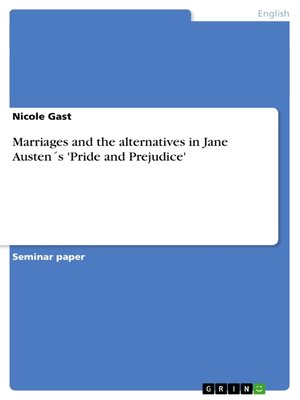
Sign up to save your library
With an OverDrive account, you can save your favorite libraries for at-a-glance information about availability. Find out more about OverDrive accounts.
Find this title in Libby, the library reading app by OverDrive.



Search for a digital library with this title
Title found at these libraries:
| Library Name | Distance |
|---|---|
| Loading... |
In her work Pride and Prejudice, Jane Austen defines six types of marriage. Excluding the Phillipses and the Lucases, the remaining six marriages contrast each other and show Austen´s opinions on the subject of marriage. Within a social and cultural context where marriage was assumed to be of great importance, Austen uses this number of marriages to expose and satirise societal values of the age and to explore the nature of the ideal marriage. The marriages of Elizabeth and Darcy, Jane and Bingley, Charlotte Lucas and Mr. Collins, The Bennets, Lydia and Wickham and the Gardeners form the center of the paper. What was their driving force to enter into matrimony? Can they truly be regarded as six different types of marriage and if so – which type of marriage did Austen favour herself? As an introduction, the paper gives an insight into the meaning of and the various reasons for marriage in the Victorian era and presents the alternatives for women if an eligible partner was not in sight.







